Bomb Squad Blows Up Highly Explosive Acid Found In Walnut Hill
July 17, 2008
The bomb squad blew up a potentially highly explosive bottle of acid discovered Wednesday afternoon in Walnut Hill with a bang that was heard for miles.
The quart size bottle of picric acid was found in a barn on a farm in the 7800 block of Highway 97, less than a half mile from Ernest Ward Middle School. The bomb squad was called to the scene, and the Walnut Hill Volunteer Fire Department responded about 1:45.
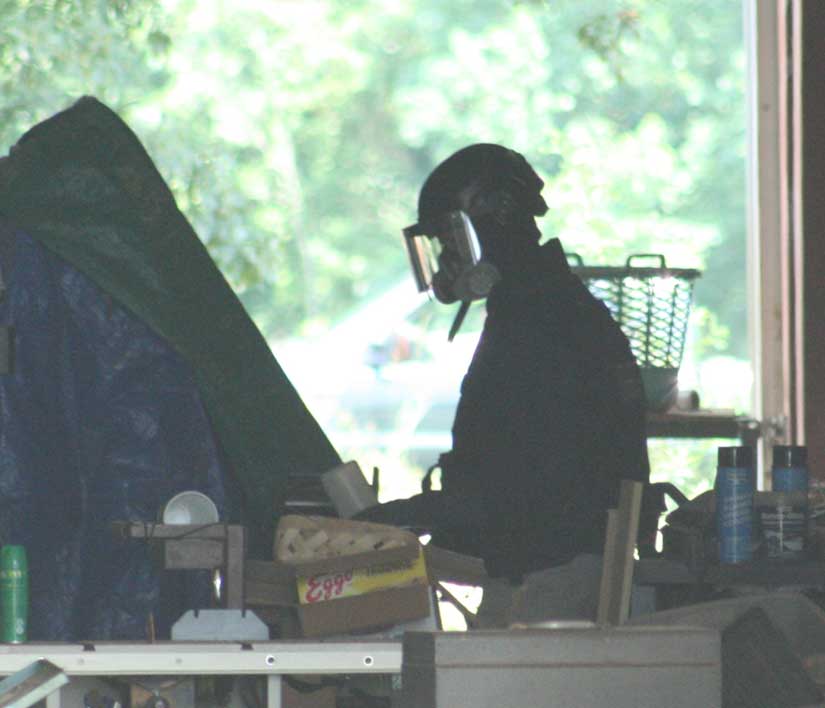 Picric acid was widely used in and prior to World War I as an explosive, having more explosive power than TNT. Once the liquid begins to dry out and crystallize, it’s explosive potential increases dramatically. It can detonate easily if it is bumped or shaken.
Picric acid was widely used in and prior to World War I as an explosive, having more explosive power than TNT. Once the liquid begins to dry out and crystallize, it’s explosive potential increases dramatically. It can detonate easily if it is bumped or shaken.
The plastic container (pictured left in the bomb technician’s hands) found in Walnut Hill had formed crystals known as “salts”, according to Sgt. John Corley from the Bay County Sheriff’s Department. Corley is commander of the Florida Region I Bomb Squad called to the scene.
Farm workers in the area were evacuated. Then, Corley and Sgt. Adam Buff, also from the Bay County Sheriff’s Department, carefully removed the container and placed it in water. Water decreases the volatility of the chemical.
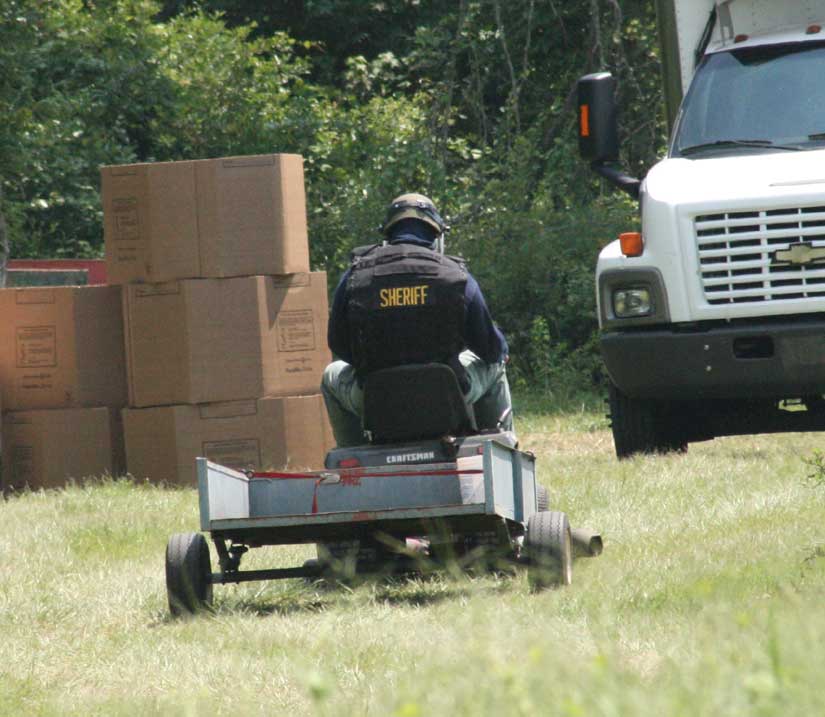 The picric acid was then carefully and slowly transported away from the barn in a cart on the back of a riding lawnmower (pictured left). Units from the Walnut Hill Volunteer Fire Department slowly followed behind, keeping their distance from the lone bomb squad member on the lawnmower.
The picric acid was then carefully and slowly transported away from the barn in a cart on the back of a riding lawnmower (pictured left). Units from the Walnut Hill Volunteer Fire Department slowly followed behind, keeping their distance from the lone bomb squad member on the lawnmower.
The picric acid in the water filled container was lowered into a hole dug at the back corner of a watermelon field across from Ernest Ward Middle School, and it was covered with dirt. The fire department was then allowed into the area where they wet down the surrounding grass and trees to prevent a fire.
Fire units were dispatched to standby along Highway 97 and near Arthur Brown Road. One fire truck was moved about 500 feet away into the watermelon field, upwind from the planned explosion. Firemen were told to stay behind the truck for protection. NorthEscambia.com was with that fire crew in the watermelon field.
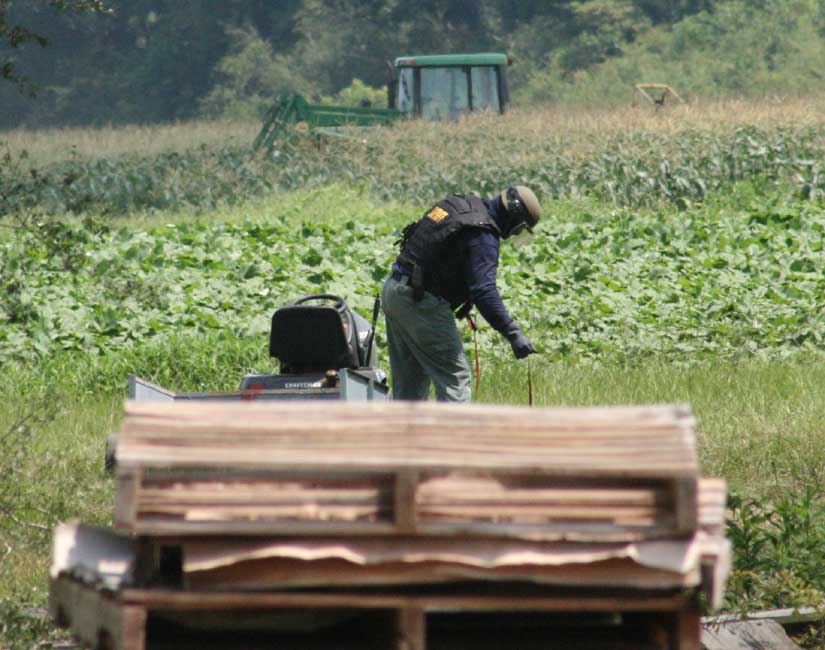 Bomb squad members then loaded the hole with explosives. About 3:30, they were then detonated with a loud boom that was heard up to three miles away from the scene. Smoke boiled upward from the explosion, while a water vapor cloud moved away in the wind.
Bomb squad members then loaded the hole with explosives. About 3:30, they were then detonated with a loud boom that was heard up to three miles away from the scene. Smoke boiled upward from the explosion, while a water vapor cloud moved away in the wind.
Fire crews were kept back from the explosion site for about 15 minutes until it was determined that any potential picric acid that remained was clear. Firemen then sprayed more water around the scene to further insure that all of the chemical was dissipated.
Internet research indicates that two ounces of picric has the potential explosive power of one stick of dynamite. A quart container, like the one found in Walnut Hill, would hold 32 ounces. That, at least according to the internet research, would have given the container the explosive potential of 16 sticks of dynamite.
“Since it had salted, this was potentially a very dangerous situation,” Corley said, adding that he was not sure how the container’s explosive potential would equate to sticks of dynamite. In his years with the bomb squad, he said he had never dealt with picric. Before removing the container, Corley said his team members consulted with two chemists and a military bomb squad from an area base for advice.
He said that if the picric has been accidently detonated in the barn, it could have caused significant damage to the barn and nearby people.
Corley said he estimated the power of the planned explosion to be equivalent to about eight sticks of dynamite, with that power coming from the explosives used by the bomb squad to create the blast since the picric was neutralized in water.
Besides wartime bomb making, picric was once used diluted as an antiseptic and as a treatment for burns, malaria, herpes and smallpox. It was once also synthesized into a non-explosive insecticide called chloropicrin. Chloropicrin was also used by the Germans and British as a chemical warfare agent during World War II.
It was not known why the picric acid was on the farm. It was discovered by someone in the barn who researched the chemical. Once they discovered that it was potentially explosive, a call was placed for the bomb squad.
Internet research discovered perhaps a couple of dozen incidents around the country were bomb squads had been called to destroy picric. Most of those incidents involved just a few ounces of the acid, and none involved anywhere near the quantity that would be in a quart jar.
Click here for more exclusive photos from the bomb squad incident in Walnut Hill.
Pictured top: The bomb squad blew up a bottle of highly explosive acid in Walnut Hill Wednesday afternoon. Debris from the container and dirt can be seen flying into the air in the picture. Pictured below: Sgt. Adam Buff (left) and Sgt. John Corley from the Region I Bomb Squad prepare the detonation cord used to set off the controlled explosion. NorthEscambia.com exclusive photos.
Comments
4 Responses to “Bomb Squad Blows Up Highly Explosive Acid Found In Walnut Hill”



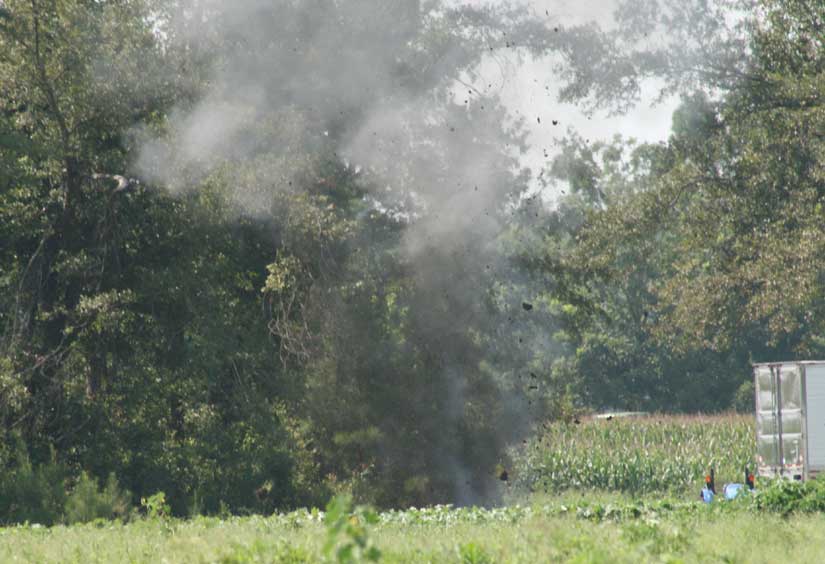
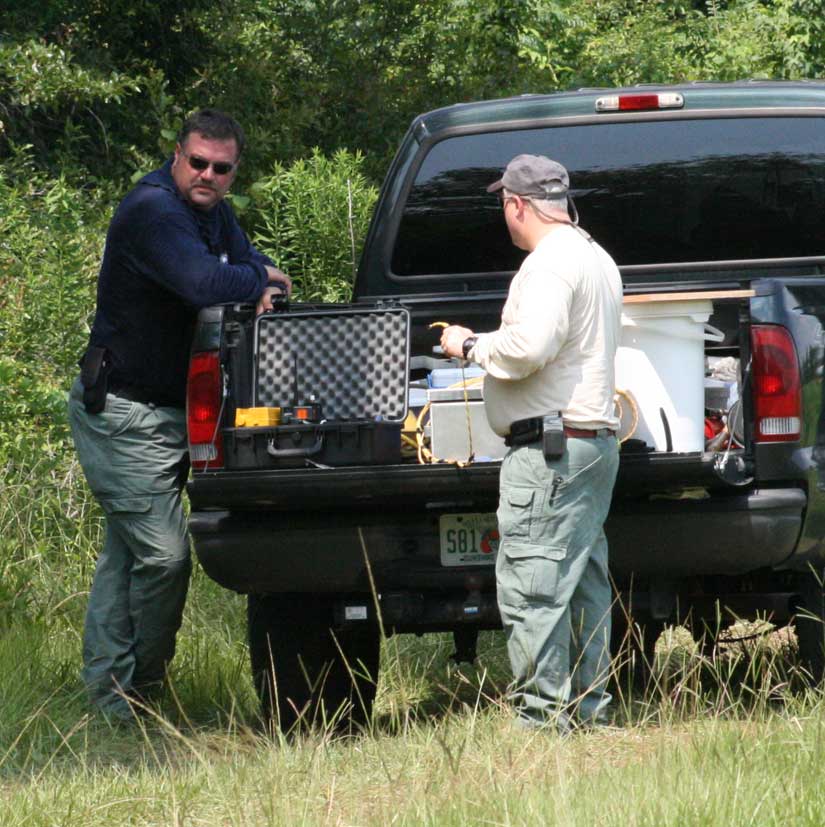
Matt – just because it is dry doesn’t mean it has crystallized. You’ve seen carbon soot or ash and you’ve seen a diamond. Both are dry but one is crystalline and the other is not.
Crystalline picric acid is incredibly dangerous. Period.
My qualifications: material scientist and chemist
Trey – that’s a damn fine question. I was wondering that too. One good bump and that line squad member would be singing a sad song.
I would say Louis is spot on.
Picric acid is by no means as “dangerous” as they make it to be. Yes, the metal salts are somewhat sensitive and removing a metal cap lined full would be dangerous indeed. I have hit the material with a metal hammer on an anvil and it doesn’t detonate when bone-dry. My point is that it is mostly just hype and another case of people trying to justify their jobs.
Hello,
This is a constructive comment. Alot of the basic safety factors have been ignored on this job. For exemple; the safety gear of the bomb technicien (he should have a full bomb suit), the transport equipement if we can call this equipment ( this is very far from a bomd carriage) and the safety on site, firefighters to close to disposale site, any vibration can set off the picric acid. Please, do not take this job as an exemple.
Regards,
why would you transport something so highly explosive with a home-made trailor and a craftsman lawnmower?